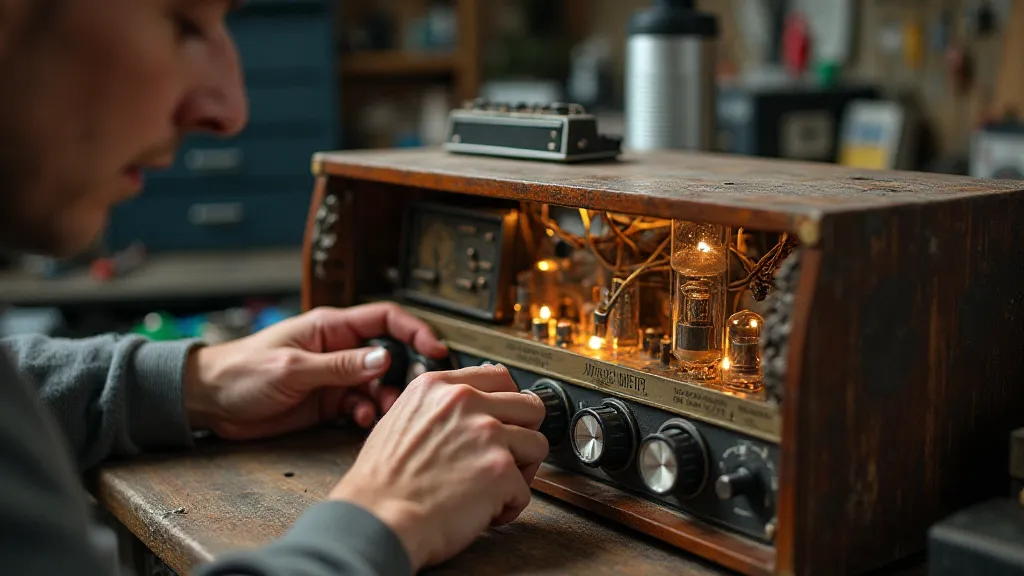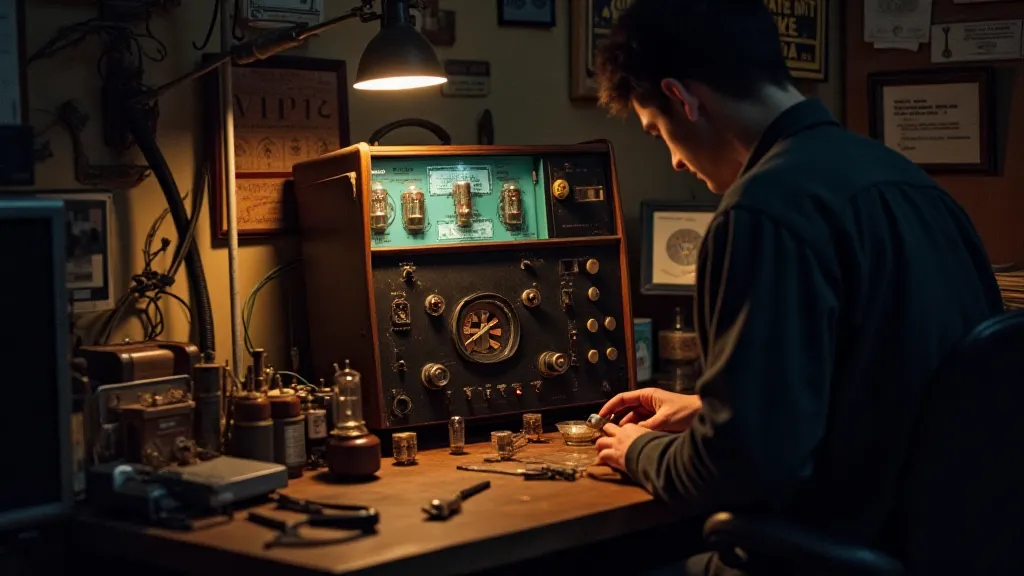The Shadow of the Switch: Troubleshooting Intermittent Radio Operation
There’s a particular melancholy that settles over a radio restorer when faced with an intermittent problem. It’s not the frustration of a visibly broken component or a straightforward wiring fault. No, the true challenge, the one that can feel like chasing shadows, is when a beloved antique radio works… sometimes. Those sporadic moments of blissful sound, followed by sudden silence, are a siren song of difficulty, a reminder of the delicate and often unpredictable nature of these vintage treasures. It’s a feeling akin to witnessing a cherished antique accordion, capable of soaring melodies, fall silent mid-performance—the beauty and possibility abruptly halted.
I remember my grandfather, a quiet man of meticulous habits, painstakingly restoring a Zenith Stratosphere in the early 1980s. He’s the reason I’m here, wrestling with these vintage electronics. He’s the one who first instilled in me an appreciation for the craftsmanship, the ingenuity, and the enduring allure of antique radios. The Stratosphere, with its cathedral-like presence and warm, comforting glow, became a symbol of his dedication – a tangible representation of bridging the past with the present. But even his remarkable skills were tested by a persistent, intermittent hum and crackle that plagued the radio for months. He's the one who taught me to appreciate the patience required; the understanding that chasing an elusive fault is often a lesson in itself.

The Nature of the Beast: Why Intermittency is a Particular Challenge
Modern electronics are, to a large extent, designed for reliability. Manufacturers employ stringent quality control and use components built to last. Antique radios, however, existed in a different era. Components were often selected based on cost and immediate functionality, not necessarily longevity. Manufacturing tolerances were wider, and the expected lifespan was considerably shorter. Furthermore, the materials themselves – bakelite, paper capacitors, cloth-covered wiring – are all susceptible to degradation over decades of use and exposure to environmental factors. These are not hard, inflexible problems; they’re the consequence of time and the inevitable march of entropy.
The frustrating thing about intermittent issues is that they rarely present themselves in a predictable manner. A component might work perfectly during initial testing, only to fail under the stresses of extended operation or fluctuations in temperature. It's a far cry from a simple dead short or an obviously damaged resistor. Identifying the root cause demands a methodical approach, a willingness to dig deep, and a healthy dose of intuition – the kind that comes from experience and a profound respect for the technology.
Pinpointing the Source: A Methodology for Troubleshooting
So, how do you hunt down a ghost in the machine? It begins with meticulous observation. Document everything. Note exactly when the problem occurs: is it after the radio has been running for a certain amount of time? Is it triggered by a particular function (like tuning or volume adjustment)? Does the problem worsen in different ambient temperatures? Detailed notes are your most valuable tool.
Next, consider the most likely culprits. Loose Connections are the most common cause. Over decades, solder joints can crack, wires can become frayed, and connectors can corrode. A gentle wiggle of knobs, switches, and wires during operation can often reveal a transient connection that is the source of the problem. A magnifying glass and a bright light are essential for this process.
Switch Contacts are notorious for intermittency. These are mechanical devices, subject to wear and contamination. A contact cleaner specifically designed for electronics can sometimes provide a temporary fix, but often a more thorough cleaning or even replacement is necessary. Pay particular attention to the bandswitch, the tuning capacitor contacts, and the power switch. The friction of these contacts over time creates a film that disrupts the electrical current. Cleaning and lubrication, while sometimes a temporary fix, can alleviate some of this friction.
Capacitors, particularly paper capacitors, are another prime suspect. The dielectric material dries out and cracks, leading to leakage and erratic behavior. These are almost invariably a replacement candidate in any restoration project, and intermittent failures are a common indicator of their impending demise.
Vacuum Tubes, while generally robust, can also contribute to intermittent problems. Microphonic vibration (where the tube physically vibrates in response to audio signals) can create spurious noise and instability. A bad tube can also exhibit erratic behavior that manifests as intermittent failures. A tube tester is an invaluable tool for diagnosing tube issues.

The Importance of Patience and Respect
Troubleshooting intermittent problems is not a race. It demands patience, a willingness to experiment, and a deep respect for the craftsmanship that went into the original design. These radios were built by skilled individuals who took pride in their work, and understanding their principles is just as important as understanding the electronics themselves. Think about the cabinetmaker who carefully shaped the wooden cabinet, or the wireman who meticulously routed the intricate wiring – these were artists in their own right.
It’s also crucial to remember that not every problem has a simple solution. Sometimes, despite your best efforts, you may have to accept that a particular component is simply beyond repair. This is where the collecting aspect comes into play. Learning to appreciate the radio's beauty and historical significance, even with its imperfections, is an important part of the experience.
I recall my grandfather, after weeks of frustrating troubleshooting on that Zenith Stratosphere, finally admitting defeat on the intermittent crackle. He simply cleaned the chassis, polished the cabinet, and declared the radio “a testament to a bygone era.” There’s wisdom in that – a recognition that the pursuit of perfection can sometimes overshadow the beauty of what already exists.
Beyond Repair: Preservation and Historical Context
Restoring antique radios isn't just about fixing broken components; it's about preserving a piece of history. These radios are more than just machines; they are cultural artifacts, windows into a different time. They represent a period of innovation, optimism, and a burgeoning consumer culture. Understanding the historical context of a radio—the era in which it was manufactured, the technology it employed, the music it broadcast—deepens our appreciation for its significance.
When facing a seemingly insurmountable intermittent problem, consider the long game. Is it worth investing significant time and resources into a component that is nearing the end of its lifespan? Sometimes, a carefully executed preservation project—one that focuses on stabilizing the existing condition rather than striving for complete restoration—is the most appropriate course of action. This allows future generations to experience the radio in its original state, albeit with a degree of stabilization to ensure its longevity.

The shadow of the switch, that elusive flicker of intermittent operation, may be a challenge, but it’s also an invitation – an invitation to delve deeper into the world of antique radios, to appreciate the ingenuity of the past, and to honor the legacy of those who built these remarkable machines.




